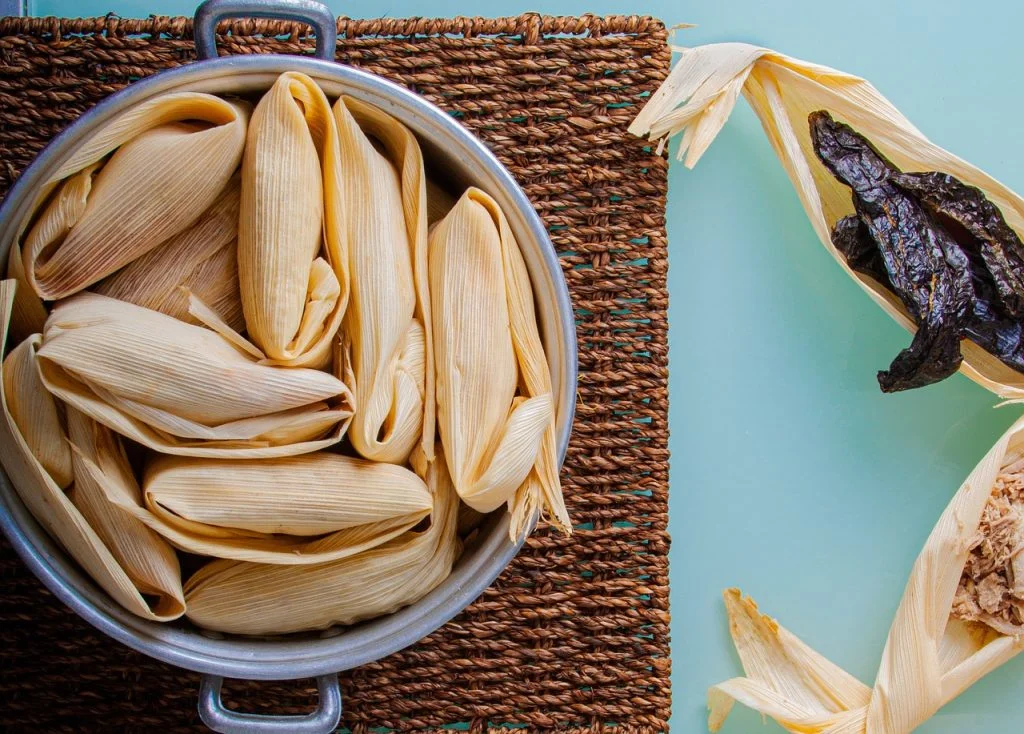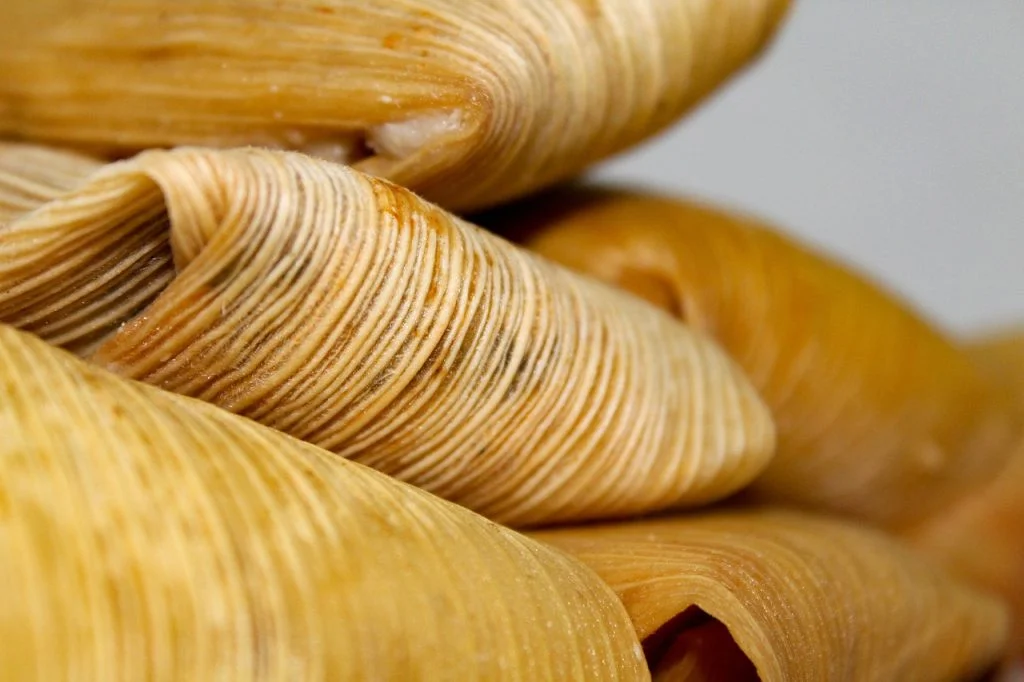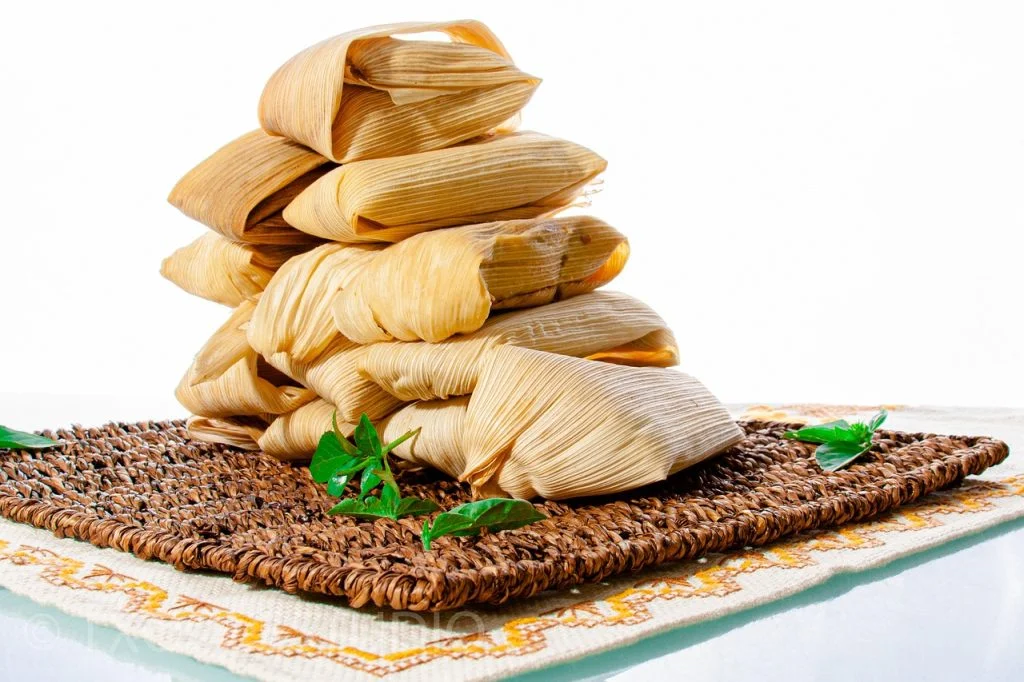Ever since my friend taught me how to wrap a tamale like a Christmas present, I’ve become absolutely obsessed with these mouth-watering parcels of joy. You haven’t really lived until you’ve tried to make 100 tamales in one go for a family reunion, only to find out you’ve run out of masa at tamale number 76. It’s a rite of passage! But, hey, who’s counting? (Spoiler: I was, painfully).
So, dear reader, are you ready to embark on a tantalizing tamale journey? Buckle up, because I’m about to unwrap 50 sizzling facts that’ll make you an expert, or at least a very hungry reader!
Tamales are like little bundles of joy; each unwrap is a new surprise, filled with the flavors of tradition and love.
Unknown
Tamale Facts
Are you ready to unwrap some fun facts about tamales? Stick with me until the end, and you’ll be perfectly prepped for the quiz waiting at the bottom of the page! Don’t disappoint me.
- Tamales originated in Mesoamerica as early as 8000 to 5000 BC.
- The word ‘tamale’ is derived from the Nahuatl word ‘tamalli’, which means wrapped food.
- Tamales were often used as portable food, perfect for hunters, travelers, and soldiers.
- They are traditionally steamed in a corn husk or banana leaf.
- The filling of tamales can vary greatly depending on the region and tradition.
- In Mexico, tamales are often associated with celebrations, especially Christmas.
- The masa, or dough, is traditionally made from nixtamalized corn (hominy).
- Tamales can be sweet or savory, with fillings ranging from meats to fruits.
- In some regions, tamales are eaten with a spoon, as they can be very moist.
- Each region in Mexico has its own unique type of tamale.
- Guatemala has a version of tamales called paches, which are made with potato dough.
- Some tamales are made with a red or green sauce integrated into the masa.
- The preparation of tamales is often a family event, known as a ‘tamalada’.

- In the U.S., the city of San Antonio, Texas, holds an annual Tamale Festival.
- Aztec and Maya civilizations used tamales for ritual sacrifices and offerings.
- Tamales can be cooked by boiling, steaming, grilling, or even fire-roasting.
- Peruvian tamales are known for using lard and chicken in their preparation.
- The size of a tamale can vary from small, snack-sized to large, meal-sized portions.
- In Cuba, tamales are made uniquely with the addition of sofrito, a type of sauce.
- El Salvador is known for its ‘tamales de elote’, made with sweet corn dough.
- In the Philippines, a version called ‘tamales’ exists, influenced by Spanish colonization.
- Some Indigenous tribes in North America have their own versions of tamales.
- Vegetarian and vegan tamales are gaining popularity, using plant-based fillings and fats.
- Some modern tamales use unconventional ingredients like quinoa or sun-dried tomatoes.
- In Bolivia and other South American countries, tamales are often called humitas.
- Tamales have been transported into space on NASA shuttles as part of astronauts’ meals.
- There’s a sweet version of tamales called ‘tamales dulces’, with raisins and sugar.
- The process of making tamales is labor-intensive and often involves community participation.

- Some regions in Mexico have tamales filled with iguanas, frogs, and fish.
- In Chicago, the ‘Tamale Guy’ is a well-known figure who sells homemade tamales.
- Freezing tamales is a common practice for preserving them for later consumption.
- There’s a specific dish in Mexico called ‘tamal en cazuela’, which is a tamale pie.
- Ancient tamales were often filled with turkey, flamingo, frog, and axolotl.
- Some gourmet chefs have experimented with tamales, incorporating luxury ingredients.
- In Colombia, tamales are often served with ‘arepa’ and chocolate for breakfast.
- ‘Zacahuil’ is a giant tamale from the Huasteca region of Mexico, sometimes 3 meters long.
- Tamales are also popular in the Southern United States, with African and Spanish influences.
- A unique version in Arizona includes sweet corn and pineapple fillings.
- In Belize, tamales are known as ‘bollos’, often served with coconut fish stew.

- Venezuela has a version called ‘hallacas’, which is similar but distinct from tamales.
- Tamales are often served with ‘atole’, a traditional Mexican hot drink.
- The corn husks, after being used for tamales, are often recycled for other uses.
- In some traditions, finding a small trinket or item in your tamale brings good luck.
- ‘Tamale pie’ is an Americanized dish, inspired by the flavors but not an authentic tamale.
- The fastest tamale-making record is held by a team in Mexico, making thousands in a few hours.
- Tamales are often paired with ‘mole’, a complex, flavorful Mexican sauce.
- In Honduras, tamales are called ‘montucas’ and are often filled with beans and meat.
- ‘Chuchitos’ are a Guatemalan version, smaller and with a firmer masa.
- ‘Tamales negros’ are a Guatemalan sweet tamale with chocolate, fruits, and nuts.
- In Costa Rica, Christmas isn’t complete without the traditional making and sharing of tamales.
Tamale Myths

Are tamales a fast food or a healthy option? Let’s unwrap (I can’t stop making this pun) some myths about them to find out the actual truth.
- Tamales Are Always Spicy
Tamales’ spice level varies widely depending on the recipe and regional traditions. Many tamales are actually quite mild, focusing more on flavors from ingredients like corn dough, meats, cheeses, or even sweet fillings. - Tamales Are Only a Mexican Dish
While Mexican cuisine is famous for tamales, many Latin American countries also enjoy them with their own unique variations. For instance, people in Central America often use banana leaves instead of corn husks for wrapping. - Tamales Are a Fast Food Option
Making tamales is a time-consuming process, often involving family or community gatherings. The preparation of the masa (dough), filling, wrapping, and steaming can take several hours or even a full day. - All Tamales Are Made with Meat
There’s a wide variety of tamales that cater to different dietary preferences, including vegetarian and vegan options. These might feature beans, cheese, vegetables, or fruits instead of meat. - Tamales Are Eaten Year-Round
People enjoy tamales at any time, but they become particularly special during celebrations like Christmas, Day of the Dead, and other holidays across various cultures. During these times, families and friends often make them in large quantities to share.
No products found.
Tamale FAQ

While researching all these facts about tamales, I found the answers to some of the most asked questions online, so I am sharing them with you. Real carefully because the quiz is next.
- What is a Tamale?
A traditional Mesoamerican dish, a tamale consists of masa (a dough made from nixtamalized corn) filled with meats, cheeses, fruits, vegetables, chilies, or any preparation according to taste, wrapped in a corn husk or banana leaf and steamed until firm. - What is the History of Tamales?
The history of tamales dates back to ancient times, as early as 8000 to 5000 B.C., in Mesoamerica. Civilizations like the Aztecs, Maya, and Incas used tamales as portable food, often for hunters, travelers, and soldiers. People used tamales in rituals and celebrations, symbolizing their connection with their gods. - What Does ‘Tamales’ Mean?
The Nahuatl (Aztec language) word ‘tamalli‘, meaning ‘wrapped‘, gives rise to the word ‘tamale‘. This name aptly describes the tamale’s most distinctive aspect – its method of wrapping in a husk or leaf before cooking. - Are Tamales Hard to Make?
Making tamales can be a bit time-consuming and requires some practice, especially when it comes to spreading the masa and wrapping the husks. However, it’s a fun and rewarding process, often turned into a social event called a ‘tamalada‘ where friends and family gather to make tamales together. - Are Tamales Gluten-Free?
Traditionally, they make tamales gluten-free using masa harina, a type of corn flour. However, it’s important to check the fillings and ensure that no cross-contamination occurs if you need them to be strictly gluten-free for health reasons.
Tamale Trivia

Welcome to the quiz. It took some time to make, but it was really fun, so good luck with it. Answer correctly, or you might just find your next tamale mysteriously disappearing, bite by bite!
Conclusion
Well, you have reached the end of this tamale tale. You uncovered the history, the variety, and the sheer joy these little bundles bring to our plates. Remember, making tamales is not just cooking; it’s an art, a family affair, and sometimes a test of patience.
As we bid adieu, tell me: Have you ever had a tamale-making disaster or triumph worth sharing? Spill the beans (or the masa), and let’s laugh together in the comments!
3 Sources Used For This Article

